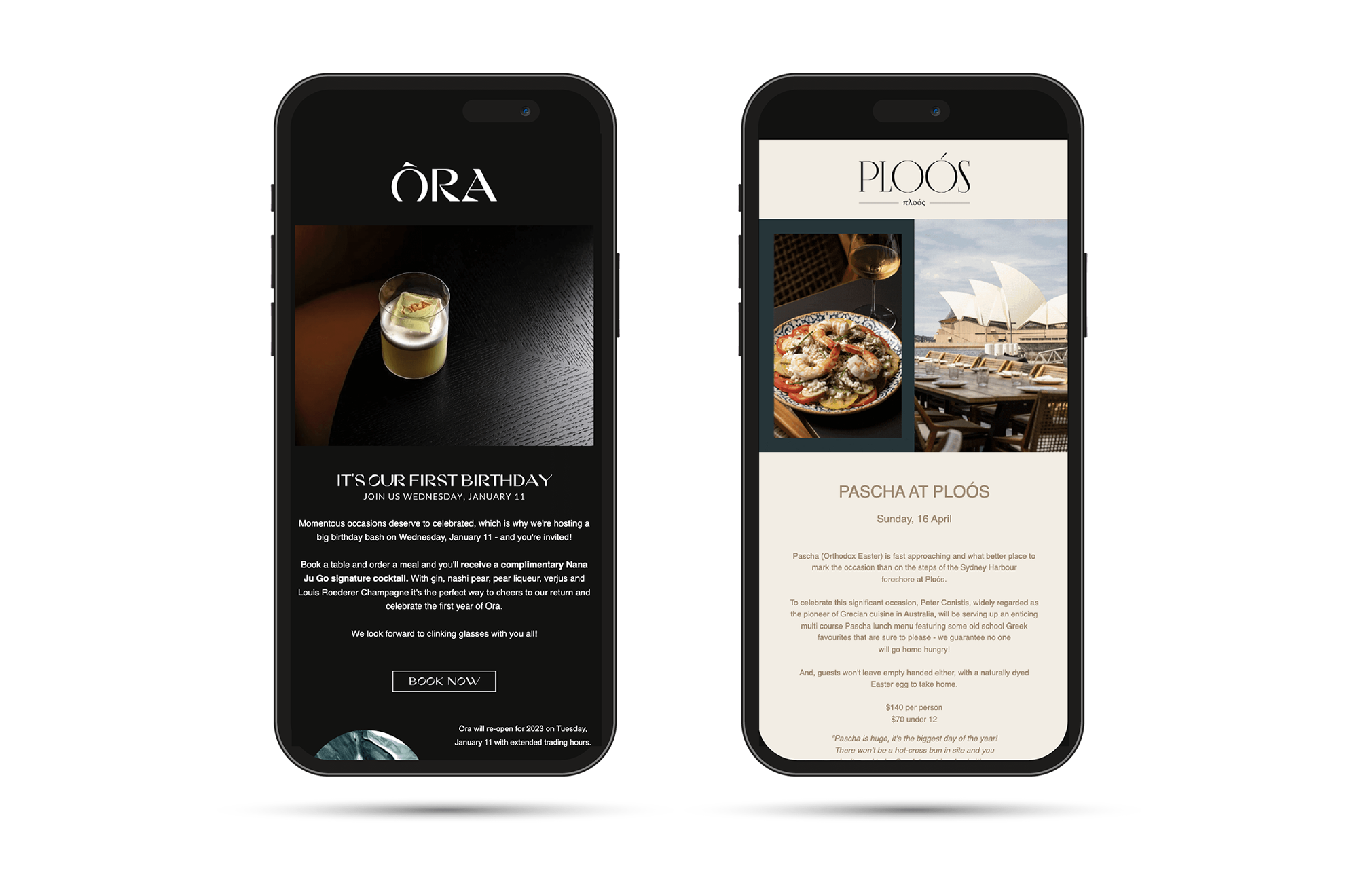restaurant marketing strategy
How to 2X your restaurant revenue
Increasing revenue by 100%, or more, isn’t just about increasing customers. It’s about using a strategy that creates leverage, and leverage is about getting larger outcomes from the same inputs. We don’t just want more new customers, we want them to spend more, more often, and in larger groups.
Follow our step by step guide to build your own strategy using your data.

increasing revenue
Create your own strategy by following our simplified process and create a compounding effect on revenue and total value.
Step 1.1
Number of new customers per month
The first variable is the number of new customers your venue receives each month, defined as new customers who made a booking. Technically, they could have been a previous diner on another customer’s booking but this is their first time making a booking. Most online booking providers provide this info. It’s 1 of 4 data points you absolutely need to know.

Step 1.2
Average booking size
The average number of diners for each booking. Take the total lifetime covers, and divide by the total lifetime bookings to calculate the average table size.
Revealing this number can also give some insights on how to configure the table plan and menu design.

Step 1.3
Average total visits
This is the average number of times, each customer, makes a booking in their lifetime. This data may be a little tricky to find depending on your online booking software. Typically, you can find this by downloading all-time customer data, finding the column for ‘total visits’ and averaging that column. This is typically a number between 1 and 2.



Step 1.4
Average spend per person
The average amount of money that each customer spends per visit. Typically, this number is easy to obtain from your POS.

Step 2
Calculate customer lifetime value (CLV)
This is how much each new customer (defined as someone who makes a booking for the first time) is worth to your business in revenue.
Average booking size x Average total visits x Average spend per person = CLV
Example:
Average booking size is 3 pax, Average total visits is 2, Average spend is $75pp
CLV = 3 x 2 x $75 = $450
Each customer, on average, is worth $450 in revenue in their lifetime.
Step 3
Calculate monthly total value
This is the average, theoretical, maximum monthly revenue for your restaurant.
CLV x number of new customers per month = Total Value
Example:
Customer Lifetime Value = $450, Total new customers per month = 100
450 x 100 = $45,000
If, on average, this restaurant won 100 new customers each month, and didn’t change CLV, then this restaurant will reach a max monthly average revenue of $45k.
Step 4
Set new targets
Choose your revenue increase %
Example:
Customer Lifetime Value = $450, Total new customers = 100
100 x 450 = $45,000
If we want to double (2X) the revenue, we double Total Value
45,000 x 2 = $90,000
Step 5
Create KPIs
The new target Total Value ($90k) is made up of the same 4 variables we calculated from steps 1.1 - 1.4.
Number of new customers per month x Average booking size x Average total visits x Average spend per person.
We could just 2x any one of these variables to increase revenue by 2x. Or, you can increase a combination of these which is far easier to do.
Example:
100 x 3 x 2 x $75 = $45,000
Which we then doubled (to increase revenue by 2x)
$45000 x 2 = $90,000
By increasing spend per head to $85 (was $75), average visits to 2.5 (was 2) and average booking size to 3.5 (was 3) then we can calculate how many new customers will be required.
90,000 ÷ 85 ÷ 2.5 ÷ 3.5 = 121
What is a compounding effect?
This is the snowball effect where seemingly small gains, get multiplied over and over into much larger gains.
Example:
100 x 3 x 2 x $75 = $45,000
add 10% increases to each variable
110 x 3.3 x 2.2 x 82.5 = $65,885 which is 46% larger, from 4 variables that increased by 10%.
Small changes. Large outcomes. Compounding.


What is strategy?
We define strategy as the decision making framework to increase Total Value.
Total value is the product of new customers, average visits, average booking size and average spend per person.
A restaurant’s revenue is entirely dependent on these 4 variables.
A great strategy will enable restaurants to maximise each of the 4 variables, creating a compounding effect, leading to higher revenue (or Total Value).
Strategy Tips
For the vast majority of restaurants, the number of new customers from walk-by or word-of-mouth isn’t enough, and marketing is required.
A high CLV will reduce the number of new customers required, driving down marketing costs
A lower CLV will increase the requirement on new customers
You can calculate the exact number of new customers required to hit target revenue
You can estimate the marketing cost to acquire those customers (Total Marketing Spend / New Customers) x Target New Customers






